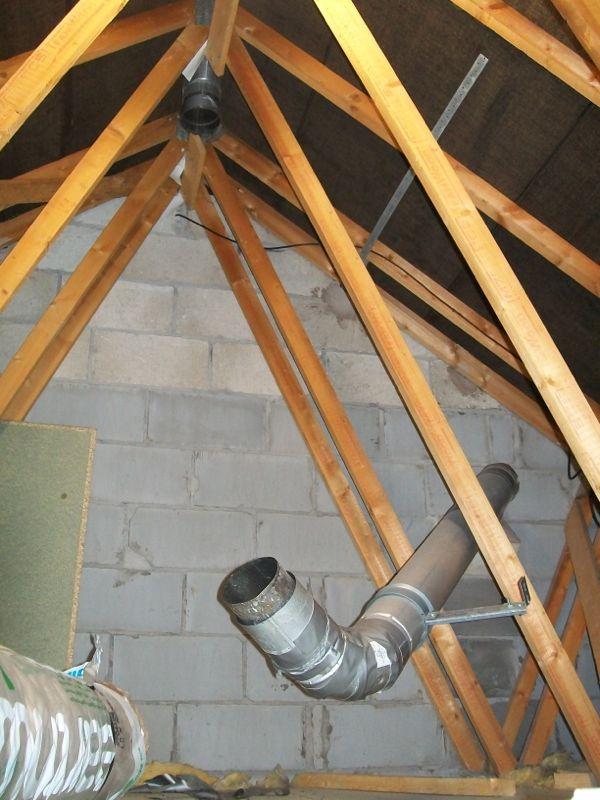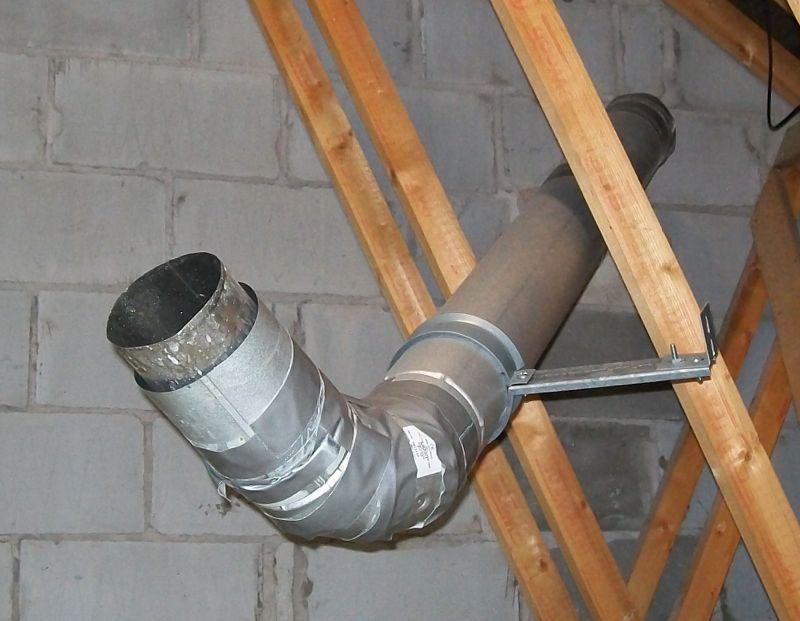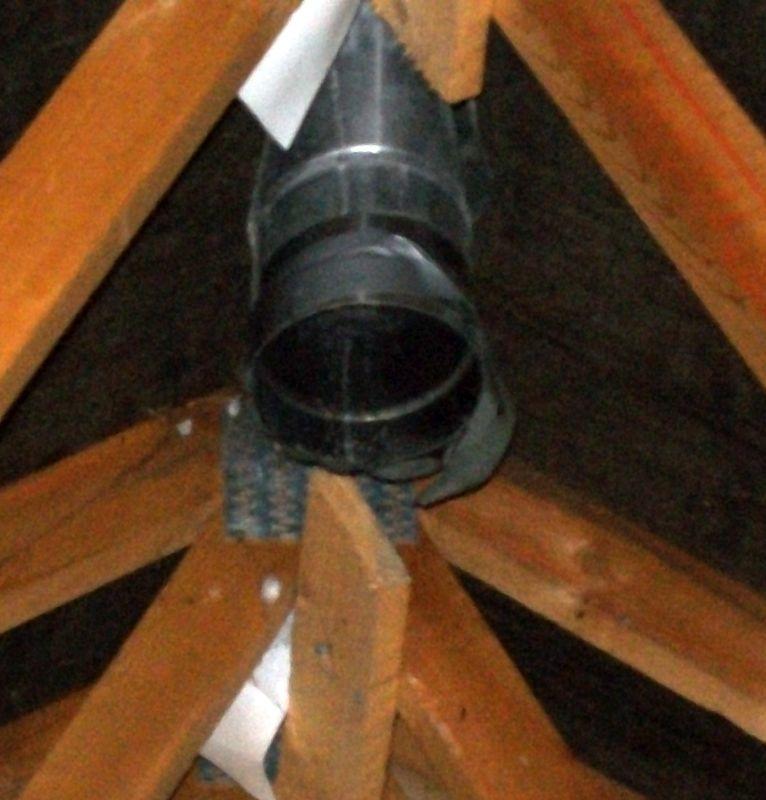You are using an out of date browser. It may not display this or other websites correctly.
You should upgrade or use an alternative browser.
You should upgrade or use an alternative browser.
Flexible flue - is this as complete a bodge as I think it is
- Thread starter SimonH2
- Start date
Not to current standards.
And talking of standards, it is the protection of the circuit and the conductors that are of relevance, not the loading. The whole idea of overcurrent protection is to protect cables from damage, and thus your property.
The electrician extending the radial into a ring should have notified this via their certification body and filled out a certificate.
And talking of standards, it is the protection of the circuit and the conductors that are of relevance, not the loading. The whole idea of overcurrent protection is to protect cables from damage, and thus your property.
The electrician extending the radial into a ring should have notified this via their certification body and filled out a certificate.
Whilst the mortar joints arn't ideal we have all seen far worse & I doubt that the joints in the pics would pose any problem at all However the rest of the installation in a 6 year old property would be RIDDOR ! 
Like I said, it's not a problem - when these properties were built, insulation was something they'd heard of. And I'm well aware of the purpose of overcurrent protection thank you very much.And talking of standards, it is the protection of the circuit and the conductors that are of relevance, not the loading. The whole idea of overcurrent protection is to protect cables from damage, and thus your property.
All the works were notified etc.The electrician extending the radial into a ring should have notified this via their certification body and filled out a certificate.
Since you are feeling so pedantic, i think you should also read up on the requirements for power in a garage and plastic soil pipes passing through buildings. I think you'll find your ring to the garage and your expanding foam need looking at.
This will keep you busy in the meantime.
https://www.hse.gov.uk/forms/incident/f2508g2.pdf
This will keep you busy in the meantime.
https://www.hse.gov.uk/forms/incident/f2508g2.pdf
Perhaps if you feel it is such an issue, pointers to what you think may be an issue and the appropriate regs would be in order. Just suggesting something isn't to regs isn't helpful (especially when I've got certificates that say otherwise) - BS7671:2008 runs to 380+ pages, about 250 without the appendixes and tables at the back.Since you are feeling so pedantic, i think you should also read up on the requirements for power in a garage and plastic soil pipes passing through buildings. I think you'll find your ring to the garage and your expanding foam need looking at.
If you are suggesting that there's some requirement (for the soil pipe) the developer ignored when the buildings were put up, then that wouldn't surprise me - but then building control should have picked that up at the time, which they didn't.
This will keep you busy in the meantime.
https://www.hse.gov.uk/forms/incident/f2508g2.pdf[/QUOTE]
Ah, yes. That seems a more appropriate form than RIDDOR - but I'll wait until contracts are exchanged before I start stirring on that one.
Did not read your entire post but flexi flue liner is only suitable for lining flues not to be used as per your photos in the loft ! bodge up !
i think you would need to spend a few hundred quid on this just to get it up to be being a bodge
Well the vendor has now paid an unknown sum to have it sorted. Somehow I don't think I'll be on his crimbo card list - what with insisting he fix this AND repair the broken boiler he wanted to palm off on meDid not read your entire post but flexi flue liner is only suitable for lining flues not to be used as per your photos in the loft ! bodge up !
i think you would need to spend a few hundred quid on this just to get it up to be being a bodge
And thanks to a breakdown in communications, it transpires that the local heating/plumbing outfit I use have put the safety checks on the vendors bill - when they were supposed to invoice those to me. They are sorting that one out.
Still no expansion on that ? You seem to be implying that something is wrong, but giving no hints whatsoever as to what. As such it's a completely unhelpful comment.Since you are feeling so pedantic, i think you should also read up on the requirements for power in a garage and plastic soil pipes passing through buildings. I think you'll find your ring to the garage and your expanding foam need looking at.
This will keep you busy in the meantime.
https://www.hse.gov.uk/forms/incident/f2508g2.pdf[/QUOTE]
Well the purchase is now complete, and what's more the receipt for the fire is in the file of papers I've been given - so I'm able to identify the installer (it's a local fire appliance showroom).
Resurrecting a thread from the past, I have a new twist.
So it came round to gas safety checks time again, and this year the flue for the gas fire just wasn't working right. The smoke went up the flue, but didn't appear outside. Even after a second smoke bomb.
Looked in the attic, and it looks like it's had a smoke bomb let off in it. See if you can spot why
And as a reminder, this is what it looked like 3 years ago :
So next week I'll be having "a conversation" with the people who did the work 3 years ago, and I suspect the manager there might be feeling a tad uncomfortable when I've finished. Luckily the tenant hasn't actually been using the gas fire, and if she had been, it's a fairly well ventilated loft so it's unlikely that anything serious would have happened.
So it came round to gas safety checks time again, and this year the flue for the gas fire just wasn't working right. The smoke went up the flue, but didn't appear outside. Even after a second smoke bomb.
Looked in the attic, and it looks like it's had a smoke bomb let off in it. See if you can spot why
And as a reminder, this is what it looked like 3 years ago :
So next week I'll be having "a conversation" with the people who did the work 3 years ago, and I suspect the manager there might be feeling a tad uncomfortable when I've finished. Luckily the tenant hasn't actually been using the gas fire, and if she had been, it's a fairly well ventilated loft so it's unlikely that anything serious would have happened.
- Joined
- 19 Jul 2008
- Messages
- 5,898
- Reaction score
- 1,039
- Country

Inadequate fixings, always needs a minimum of two or more fixings for flue pipework (fulcrum come to mind). Difficult to see fittings are correct from photo though. The fittings and pipework should have the makers stickers on and usually not interchangeable with other makes.
If its an approved twin wall throughout, the tape is not needed unless the manufactures state in their instructions however some put this on and rely on it to hold the pipework together as it seems in this case.
It is ID as you may well be aware, riddor if you like. If installation company drag their heels or you are really ****ed off get Gas Safe involved as soon as possible they like evidence "as is".
This situation shows the importance of having every gas appliance checked yearly and the occupier upstairs was very lucky.
If its an approved twin wall throughout, the tape is not needed unless the manufactures state in their instructions however some put this on and rely on it to hold the pipework together as it seems in this case.
It is ID as you may well be aware, riddor if you like. If installation company drag their heels or you are really ****ed off get Gas Safe involved as soon as possible they like evidence "as is".
This situation shows the importance of having every gas appliance checked yearly and the occupier upstairs was very lucky.
- Joined
- 19 Jul 2008
- Messages
- 5,898
- Reaction score
- 1,039
- Country

Just to add to the above comment this is untrue, everyone has been very very lucky that's why most gas appliance have flues that directly terminate outside to atmosphere.it's a fairly well ventilated loft so it's unlikely that anything serious would have happened.
OK, I'll clarify what I meant. There's a large space in the attic, the gas fire would only have been used intermittently if it had been used, and the attic is well vented - there's a continuous soffit vent along both sides (vary large total vent area). There's aren't any significant gaps in the ceiling, so any POCs would have to permeate through the plasterboard to get into the living space.Just to add to the above comment this is untrue, everyone has been very very lucky that's why most gas appliance have flues that directly terminate outside to atmosphere.
So while it's clearly a very unsatisfactory situation, it's a very far cry from something venting into a closed (unvented) space (where it would accumulate and/or restrict the draught up the flue), and with lots of gaps and cracks to allow the POCs to leak into the bedrooms - or even worse, a non-flued appliance with the vents blocked up (see other threads about that here).
- Joined
- 19 Jul 2008
- Messages
- 5,898
- Reaction score
- 1,039
- Country

Are you serious on the content of your last post?
DIYnot Local
Staff member
If you need to find a tradesperson to get your job done, please try our local search below, or if you are doing it yourself you can find suppliers local to you.
Select the supplier or trade you require, enter your location to begin your search.
Please select a service and enter a location to continue...
Are you a trade or supplier? You can create your listing free at DIYnot Local
Similar threads
- Replies
- 5
- Views
- 17K
N
- Replies
- 0
- Views
- 4K
- Replies
- 30
- Views
- 7K




